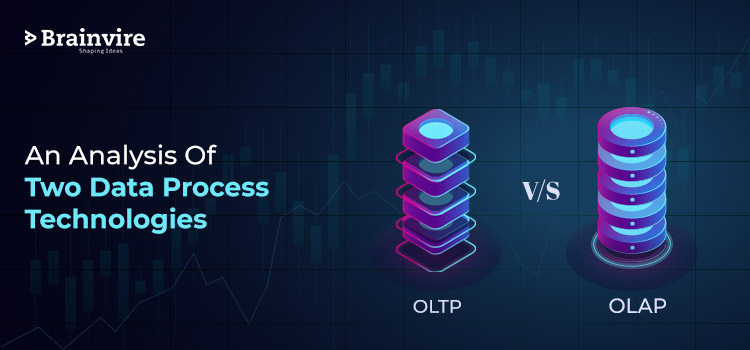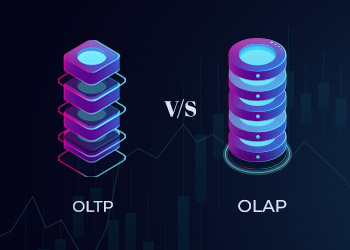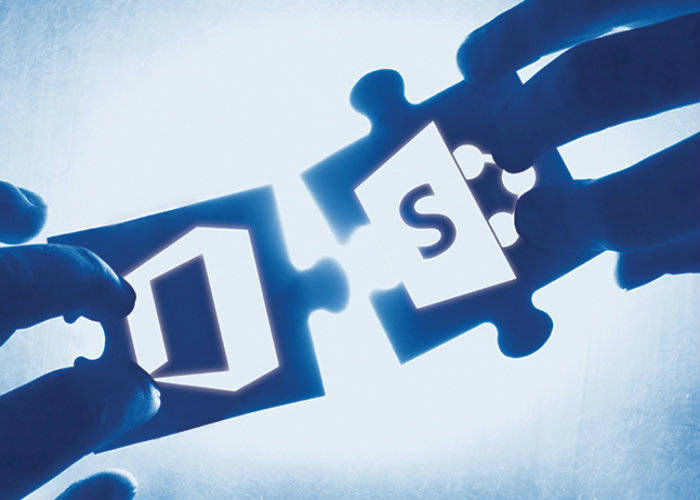
Online processing technologies come in an aggregation of types and have been used for a wide range of business tasks. It is supported by the most recently viewed and relevant OLTP Online Transaction Processing and Online Analytical Processing OLAP system. To make them more accessible to remember and decode in today’s fast-paced processing world, we prefer to refer to them as OLAP and OLTP.
In this blog, we will learn about OLTP vs OLAP by comparing two data processing capabilities, but first, we must consider these terminologies to understand the distinctions, uses, and conjunctions of OLTP and OLAP.
Retail ecommerce solutions, Online Banking, and other internet platforms use two kinds of online database systems: Online transaction processing and online analytical processing. Both devices operate by their names. OLTP corresponds to value-based processing systems, and OLAP Online Analytical Processing is an informative processing system. Transaction-based processes, such as ATMs, are handled by OLTP. OLAP is a web-based system that responds to complex analytical queries such as financial reporting, forecasting, and so on.
What exactly is OLTP?
Online Transaction Processing system is a system that automates the management of online transactional data. The OLTP method aids in the service of requests for company activities by using the processed database.
OLTP systems prioritize data transaction analysis from datasets. It is primarily in charge of storing and handling data, which consists of a unique set of data records with multiple fields/columns. A three-tier architecture is used to read, write, and update OLTP datasets regularly.
OLTP entails a large number of short-term online transactions that are done efficiently while preserving legitimate data integrity and conditional predominance. The number of transactions completed per second determines its validity.
Some of the examples of OLTP are:
ATM Centers, Online Air-ticket booking, order entry, retail sales, financial transaction systems, and Online banking system.
Key features of OLTP:
- Response time is fast
- Transactions are straightforward
- Management of operations and data
- A huge number of users.
- There’s a lot of competition
- A large amount of data
- There is a high degree of availability
- The use of data with the lifecycle
The Top OLTP Database Systems:
- Microsoft Azure SQL Database
- Google Cloud Data Platform
- MySQL
- PostgreSQL
- Oracle Database
- IBM DB2
- SAP ASE (formerly Sybase)
What exactly is OLAP?
Online Analytical Processing is a method that supports comprehensive models and enables large organizational datasets. It has multi-access to analysis requests without messing with the OLTP system.
OLAP systems focus on the use of advanced queries to collect vast volumes of data from OLTP databases and other sources for this data mining, forecasting, and Business Intelligence (BI). These databases, through a variety of data reporting methods, provide practitioners and dynamic professionals with an inside-out perspective of a wide range of data.
OLAP has the capability of converting statistical data into usable, organized data. There is no delay in transaction processing in the event of a database collapse, but it does affect the accuracy of analytical outcomes. It operates by analyzing datasets from several systems at the same time, and data is stored in multi-dimensional schemas.
Examples of OLAP Systems:
- Customer priorities are personalized using a data warehouse platform
- Sales comparison: Month-to-month and location-to-location
- User-specific analysis of various parameters dependent on monitoring and review
- Recommendations to consumers based on their past behavior and preferences
Advantages of OLAP:
- Because of optimized storage, multi-dimensional indexing, and caching, queries are executed quickly.
- Because of compression methods, data on the disc is smaller than data contained in a relational database.
- Higher-level data aggregates are computed automatically.
- For low dimension data sets, it is very compact.
- Natural indexing is provided by array templates.
OLAP’s key features are as follows:
- It has a user-friendly interface
- It supports complex analyses
- Multidimensional data views
- Data manipulation is made possible by time intelligence
Best OLAP Tools:
- Xplenty
It is an ETL interface that does not require coding or implementation.
- IBM Cognos
It is primarily used to extract data from a relational database.
- MicroStrategy
An application that employs the principle of InMemory Business Intelligence.
- Palo OLAP Server
It is commonly used as a Business Intelligence platform for managing and budgetary control, with spreadsheet software tools serving as the operating system.
- Apache Kylin
It supports massively large databases with a SQL interface and multi-dimensional processing (OLAP) on Hadoop and Alluxio.
- icCube
It is intended to allow solutions in which various enterprise users conduct ad-hoc data analysis on a centralized database.
- Pentaho BI
It is a data processing, OLAP service that reports ETL applications.
- Mondrian
It uses the MDX query language as well as the XML for Analysis and olap4j interface specifications.
What is the critical Difference between OLAP and OLTP?
Below is a detailed comparison of OLAP and OLTP based on the following essential aspects:
The primary goal is
OLTP: Online transaction management, which involves the processing of data and the execution of critical business processes promptly.
OLAP: It stands for online analytics, planning, and problem solving skills with exploring new insights.
Transaction Process
OLTP: Short and periodic transaction processing.
OLAP: Extended and less periodic transaction processing.
The functioning
OLTP: On-going processes, repeated use, quick response time, and limited data redundancy.
OLAP: System implementation, ad-hoc access, and a data center for database integration.
The Interventions
OLTP: Read and write a framework that focuses on attach, update, and extract directives.
OLAP: Reads primarily with the Select command to retrieve multidimensional data and analysis.
Dataset size
OLTP: Gigabytes, with fewer space requirements data, are stored.
OLAP: Terabytes of space are needed due to the gathering of datasets.
Latency
OLTP: The response time is calculated in milliseconds.
OLAP: The response time is calculated in seconds to minutes.
Database Design
OLTP: Industry, Transaction oriented applications such as banking, insurance, and so on.
OLAP: Customer-centered, subject-based applications such as sales, inventory, and so on.
Backup and Recovery System
OLTP: Requires a routine backup process to ensure uninterrupted trends and developments.
OLAP: Backup is needed, however missing data can be retrieved from the OLTP repository.
Data Accessibility
OLTP: Instant access to a present, flat relational, segregated, and effective source of data for business.
OLAP: Compilation of relevant data accumulated from history, analyzed, multi-dimensional. However missing data can be retrieved from the OLTP repository.
Queries
OLTP: Standard and simple queries.
OLAP: Complex and integrated responses.
Users’ Profiles
OLTP: Users such as database administrators and clerks that need essential details.
OLAP: Data analysts, administrators, chief executives, and upper management who need comprehensive data insight.
Number of Users
OLTP: Allows thousands of users to work together.
OLAP: Allows hundreds of users to interact.
Schema
OLTP: Application-based, standard, and normalized data management system.
OLAP: Subject-driven, database system of centralized, queryable data sources.
Transactional Volume
OLTP: Refers to a vast number of simple, brief transactions.
OLAP: Complex queries and a high data volume.
In Conclusion
OLTP refers to an online data alteration scheme, while OLAP refers to an online multidimensional historical data extraction system that retrieves data for analysis to aid in business decisions. How and when to use depends on the client’s needs because both serve separate functions.
If you have any questions about the same, feel free to connect with Brainvire, for it is the most reliable Business Intelligence Service and a Gold partner of Microsoft Azure SQL services.
Related Articles
-
Six Reasons for Using SharePoint Online for the Business Organizations
Microsoft has made a considerable change in its SharePoint platform by moving to the cloud with the new SharePoint Online version. SharePoint Online allows an enterprise to create, customize and
-
A Look into Message Brokers: Apache Kafka and RabbitMQ
With devices getting interconnected now, more than ever before, the communication infrastructure needs transformational shifts. The web of connected applications and devices can no longer operate at the backdrop of
-
Personalizing your Marketing Strategy opens the door for Business
Marketing is the important step of every business from the time the word business has been termed. It was essential to all types of business, but the only transformation that



